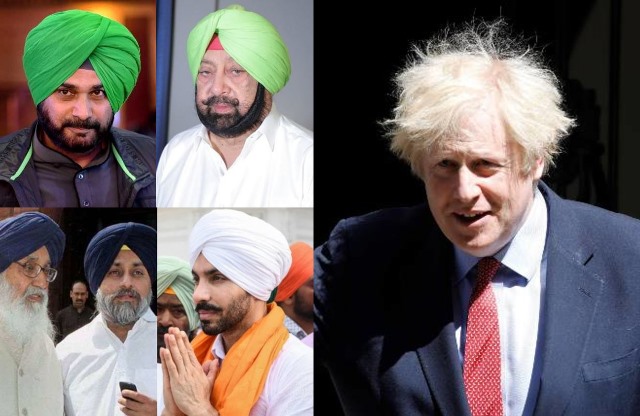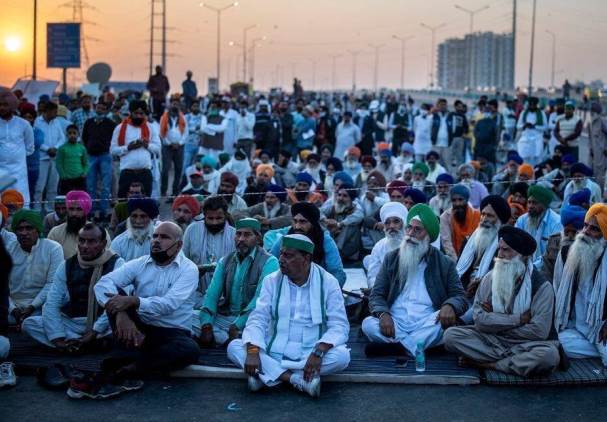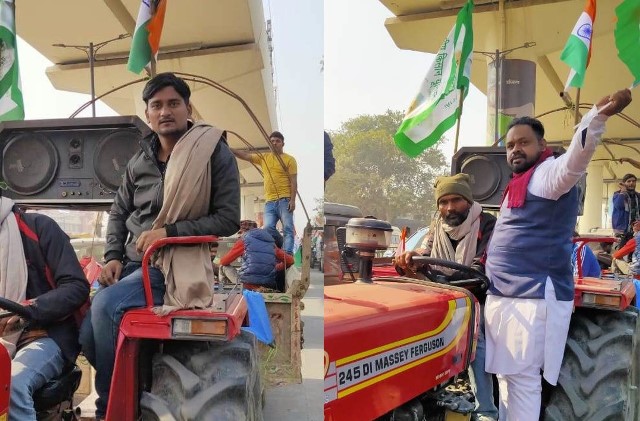Punjab’s politics seems to be like the last days of the Sikh Raj in 1840s. But more than that, it seems Pollywood has taken over politics and made it into an entertainment, splashing a different twist every day on the media. Some of the politicians appear to be political Lotharios looking for Sugar Daddys, bed hopping political parties like the changing mix of papri chaat. Some politicians are even threatening to form new types of Political Papri Chaat.
It all started with the Badals, the most promiscuous of ideological bed-hoppers. Senior Badal raised issues of Sikhs, then went against them, detaining hundreds if not thousands. He then became Indian nationalist and made the party ‘secular’. He then tied nuptials with the BJP, gathering substantive Punjabi Hindu vote. He then decided to make this historic party into a family enterprise, casting away other powerful and serious Akali leaders and promoting his son for the succession.
Instead of demanding resolution of Sikh issues such as release of long held political prisoners etc, he demanded a berth for his family at the BJP Cabinet. He then divorced the BJP as it became a liability. The father-son duo realised BJP was toxic after farmers rose against farm laws. Badals are now desperately seeking a link up with any party, such as Bahujan Samaj etc. The Akali Dal is now an unrecognisable party. What does it stand for? What is its political ideology except to protect the Badal family? They have their own TV channel to boast of ‘what they will do’ that they were not able to do in the long reign of Badals before.
It seems Punjabis have decided politicians are always acting. So why not put in professional actors. There is Navjot Sidhu, Deep Sidhu and now Shubhdeep Singh Sidhu (Moosewala). It seems the Sidhu clan have taken over entertainment from traditional marasis. All these three have provided endless entertainment off stage and on stage, in politics and in entertainment media.
Moosewalla played to the Khalistani sentiments, exploiting Bhindranwale and secessionist desires in his songs. He has now joined Congress, the party that in power attacked Darbar Sahib (Golden Temple) and killed thousands of Sikhs. In Punjab politics, such hoola hoops raise no eyebrows.
In fact, Navjot Sidhu himself has been like a ‘Bhambiri’ (spinning top) on a string. It seems whereever the pull of political gravity is heavy, he falls onto that side with a hundred explanations on why he did that to save the Punjab (from itself). After retiring from serious cricket, he became a clownish entertainer. He joined the BJP, then the Congress. The two parties that have no common political ideology. Only in Punjab can one be a secularist and Hindutva-wadi within a period of 24 hours and still have integrity. Punjabis have no concept of political ideology any more. Politics is entertainment. Sidhu apparently even considered joining Akalis at one time as well but senior Badal had already decided on the succession.
Deep Sidhu of the Khalistani flag at Lal Qila fame is another entertainer. Delivering speeches best suited to an emotional Sikh nationalist drama documentary, Deep decided to be the bull in a China shop during the very well organised peaceful march in Delhi by farmers protesting against farm laws. The world was awestruck at the size of the march and more importantly that it was peaceful. Most of the protestors were and are Sikhs. The Image of Sikhs as peaceful marchers was going down in the annals of history. World opinion had started swinging in favour of the farmers. The BJP government was worried.
Deep Sidhu did the spoiler as many suspect. He fired a group of youth. A breakaway section who put the Sikh religious flag, Nishan Sahib, on a historic seat of power turned museum building called Lal Qila. Violence happened and turned the media hostile. Hundreds of thousands of peaceful farmers had to struggle peacefully for another eight months to get repeal of the farm laws.
Why Lal Qila? It was the throne of the Mughals. Sikh General Baghel Singh had successfully taken over the Mughal seat of power in 1783 for a short time and installed the Sikh flag there. Now Lal Qila is a museum. Anyone can hire it for a day and put any flag there, family flag, corporate flag, Tik Tok flag, even a Sikh flag during the day of hire. It doesn’t need a mock siege. Just hire the building from the Dalmias.
The Govt of India hires it for Republic Day etc and puts its flags all over. Why Indian media made the Deep Sidhu episode into ‘attack on Indian sovereignty’ is another of those hilarious Indian politics cum entertainment dramas. It would have been an episode worthy of Baghel Singh’s courage had Deep Sidhu himself gone and put the Sikh flag on Rashtarpati Bhavan (Presidential Palace). That is where the seat of power in India is now. But Sikh courage now lives bravely on the celluloid and Tik Tok reality, so a flag at Lal Qila can be turned into the most heroic episode for a Sikh generation groomed on virtual reality. Consequently, Deep Sidhu is in the running now for some sort of leadership but looking for a home.
There is of course Amarinder Singh. Captain Sahib, Maharajah Sahib, Leader Sahib who knows. He hails from the great Maharajah family of Patiala who gave their formidable army over to India in return for being Maharajah forever only to find that Indira Gandhi asset-stripped him and made him a commoner after buying him out with some peanuts. So much for political acumen in the family. Captain-Maharajah-Neta Amarinder Singh found that politics can be entertaining. He was first elected under Congress in 1980, then resigned after Operation Bluestar, then joined Akalis and then sensing he was to remain second in any succession, joined Congress again and became the CM. He has now left Congress and threatening to form a new party. Rumours are that he is now in bed with BJP.
And there can be so much written about Bhagwant Maan of AAP. It could take pages.
Is there an ideological gap between Akalis, Congress, AAP and BJP? Not in Punjab which is ideologically rudderless. Party hopping is so common, no one in Punjab probably knows what any of the parties stand for. They all promise swarg (heaven).
There is now a melee of politician-entertainers in Punjab. In fact the whole Punjab politics has become one great entertainment industry. It is difficult to know who is a political Lothario and who is a serious politician. Perhaps, Punjab is showing, politics does not matter. It is all razzmatazz after all. Today here and tomorrow there. Secular one day, Khalistani another day and then Hindutva-wadi the third day. It’s just actors mugging up for a part.
Global Britain’s Focussed Foreign Policy
It used to be Pakistan that was famously mocked for a single focus foreign policy. It was Kashmir, Kashmir and Kashmir. Pakistan Foreign Policy has become more diverse now with Afghanistan and China among other interests. Where Pakistan left, it is Global Britain that is filling the vacuum of one focussed Foreign Policy. Its obsession is France.
It seems the bumble bee Prime Minister of Global Britain, Boris Johnson gets up every morning and dreams up ideas on how to ‘piss off the French’. Brexit Britain hasn’t quite turned into Rule Britannia as he had promised. So why not rally the nationalists against the oldest enemy on tap, France.
There is more coverage of spats with France in British media than any serious Foreign Policy. To get the French colourful language retched up a bit, Boris proposed in full social media glare that he send troops to France to ‘jointly’ guard against all those illegal boat people crossing over into Global Britain. This would be akin to India offering to send troops into Pakistan to stop insurgency crossing over into Jammu Kashmir.
Of course, Macron (France) had a few ‘curses’ to utter against Global Boris in private. In public he banned the British Home Minister from a meeting. British commentators called it ‘over reaction’ without adding ‘over reaction to a clown’.
More ‘illegal’ migrants have been invading the Global Britain shores since on boats. Meanwhile Boris who plays Laurel (from Laurel and Hardy) in real life with even scratching his hair and head, is dreaming of another shot at the French. What an end to an inglorious Empire and its once renown diplomatic corps.





